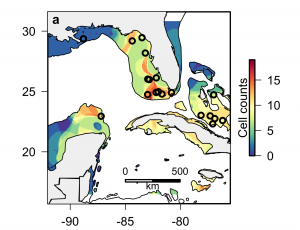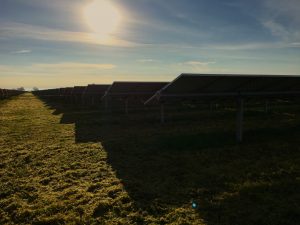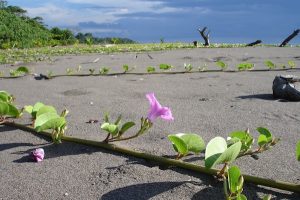Overview
The work in my group centers around in animal movement and trophic ecology. I use biogeochemical tracers integrated within a geospatial framework to understand the ecology, behavior, physiology, and movement of organisms. My work addresses issues in ecological theory, conservation, and management, often for species of conservation concern. Many of the tools I have used are applicable in a variety of environments and organisms.
Active projects
Novel approaches to age sea turtles
Population models require accurate estimates of age, growth, longevity, and mortality. Furthermore, there are gaps in our knowledge of marine habitats and environments utilized by different sea turtle life stages and the timing of transition between habitats. We are exploring the use of radiocarbon techniques to validate sea turtle age and longevity estimates, as well as expand the types of long-term trophic records that can be obtained from various tissues (e.g., eye lenses, bone, and scutes).
Funding: Tissue clocks: new methods for aging and decoding sea turtle life histories, Florida RESTORE Act Centers of Excellence Program.
Geographic origin and spatial ecology
 When large-scale gradients in isotope values lead to isotopic patterns across a wide geographic space, isotopic landscapes, or isoscapes, can be useful for tracking animal migration, both in terrestrial and marine environments. I use stable isotope approaches to examine the origin of a variety of organisms, which can aid in identifying interactions with anthropogenic threats and characterizing geospatial population trends.
When large-scale gradients in isotope values lead to isotopic patterns across a wide geographic space, isotopic landscapes, or isoscapes, can be useful for tracking animal migration, both in terrestrial and marine environments. I use stable isotope approaches to examine the origin of a variety of organisms, which can aid in identifying interactions with anthropogenic threats and characterizing geospatial population trends.
Funding: Spatial ecology and movement of marine megafauna in the Gulf of Mexico, NAS Gulf Research Program Early-Career Research Fellowship.
Compound-specific stable isotope ratios in human keratin tissues for travel history reconstruction and region-of-origin determination. National Institute of Justice.
Evaluating stable hydrogen isotopes for identifying breeding areas of harvested sea ducks. Migratory Bird Joint Ventures, US Fish and Wildlife Service.
Sea turtle genetic structure and population history
Using next-generation restriction-site associated DNA (RADSeq), we are quantifying the intricacies of genetic diversity, population structure, and demographic history of leatherback sea turtles.
Funding: Understanding genetic structure and population history of leatherback sea turtles in Florida. Sea Turtle Grant Program. Grant number 24-037R.
Coastal river and estuary linkages
Coastal rivers link coastal watersheds to marine ecosystems and provide important habitat for many commercially important marine species, amphidromous species (species that use both freshwater and marine habitats), and rare/threatened species.
Funding: Moving upstream: Quantifying materials flow between estuaries and coastal rivers. National Academies of Sciences Gulf Research Program. Grant number 200011124.
Previous projects
Wildlife and renewable energy
 Wind and solar facilities constitute forms of renewable energy that can combat climate change driven by carbon emissions. We are working to characterize the geospatial- and population-level impacts of these facilities on avian communities.
Wind and solar facilities constitute forms of renewable energy that can combat climate change driven by carbon emissions. We are working to characterize the geospatial- and population-level impacts of these facilities on avian communities.
Funding: Learning from real-word experience to understand renewable energy impacts to wildlife. California Energy Commission grant EPC-14-061; Renewable energy impacts to wildlife, USGS Cooperative Agreement G18AC00051.
Isoscape development and analytical approaches
I have contributed to enhancing the data and analytical resources for isotope-enabled migration research through the development of isoscapes and R-packages.
Funding: Collaborative Research: ABI Development ORIGIN: Origin Inference from Geospatial Isotope Networks. NSF DBI 1565128.
Physiological ecology
H and O isotopes of consumer tissues reflect not geographic origin only but also the behavioral and physiological traits of animals. H and O stable isotope variation exists even among individuals from the same site. We have developed a mechanistic modeling framework based on fundamental metabolic relationships to predict tissue isotope values. In addition, that can be extended to include behavior and movement into the isotopic incorporation.
 Resource use and individual specialization
Resource use and individual specialization
Stable isotope analysis can serve as a proxy for the ecological niche. This approach can provide a powerful tool to understand resource use as well as characterize the individual- and population-level variability and consistency through time. We have found that loggerhead sea turtles are specialists in a generalist population and that they use a small portion of the available ecological niche. We have since demonstrated that individuals exhibit long-term fidelity to a foraging region, which can result in differences in reproductive output. We also have examined foraging consistency and degree of individual specialization in multiple life stages of green turtles and found that these patterns change through ontogeny.
Methodological approaches
Applying stable isotope approaches requires employing certain assumptions and understanding the processes that may have influenced the tissue composition. We have characterized tissue-to-tissue relationships in sea turtles, evaluated potential singeing effects on bird feather isotope values, and contributed to making data more comparable among sources.
Cross-ecosystem nutrient linkages
 Stable isotopes can be useful tracers for denoting energy flow between ecosystems. For example, sea turtles act as biological vectors to deposit marine-derived nutrients in the nutrient-poor beach ecosystem when they nest. While much of the energy and nutrients return to the ocean in the form of hatchlings, we have demonstrated that a portion of these nutrients remain in the beach ecosystem and affect the plant community.
Stable isotopes can be useful tracers for denoting energy flow between ecosystems. For example, sea turtles act as biological vectors to deposit marine-derived nutrients in the nutrient-poor beach ecosystem when they nest. While much of the energy and nutrients return to the ocean in the form of hatchlings, we have demonstrated that a portion of these nutrients remain in the beach ecosystem and affect the plant community.